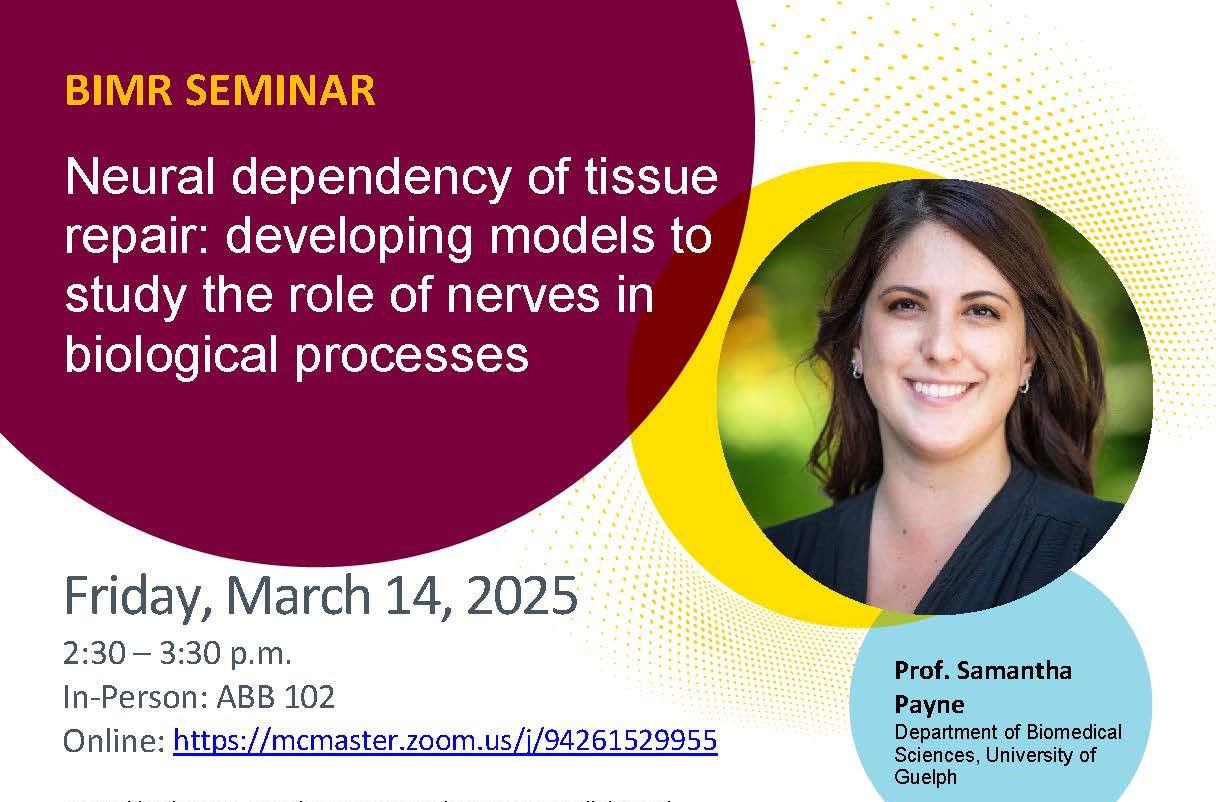Neural dependency of tissue repair: developing models to study the role of nerves in biological processes
Mar 14, 2025
2:30PM to 3:30PM

Date/Time
Date(s) - 14/03/2025
2:30 pm - 3:30 pm
Categories
Prof. Samantha Payne
Department of Biomedical Sciences, University of Guelph
Wound healing is a complex process involving various cellular and molecular interactions, resulting in the formation of a collagen-rich scar with imperfect function and morphology. In the skin, dermal fibroblasts are crucial to successful wound healing, migrating to the wound site where they are activated to provide extracellular matrix remodelling and wound closure. Peripheral nerves have been shown to play an important role in wound healing, with loss or damage to these nerves often leading to impaired healing and the formation of chronic nonhealing wounds. Previous research has suggested that sensory nerves secrete trophic factors that can regulate wound healing, including fibroblast activation, however, the direct cell-cell interaction between nerves and fibroblasts has not been extensively studied. To address this knowledge gap, we developed an in vitro co-culture model using a device called the IFlowPlate. This model supports the long-term viability of multiple cell types while allowing for direct contact between sensory nerve cells and dermal fibroblasts. Using the IFlowPlate, we demonstrate that co-culture of dorsal root ganglia with dermal fibroblasts increases fibroblast proliferation, collagen and ?-smooth muscle actin expression, and secretion of pro-wound healing factors, suggesting that nerves can promote wound healing by modulating fibroblast activation. By understanding the interactions between nerves and fibroblasts, and how they contribute to the healing response, we can gain a greater understanding of the mechanisms underlying scar formation and wound healing that can help direct development of therapeutics to promote regeneration over scarring.
Speaker bio:
Dr. Samantha Payne is currently an Assistant Professor at the University of Guelph, Ontario, Canada in the department of Biomedical Sciences. Dr. Payne completed her BSc and MSc at the University of Guelph, followed by a PhD in Chemical Engineering and Applied Chemistry at the University of Toronto, with a focus on developing cell transplantation strategies for brain repair after stroke. She then held a Postdoctoral Fellowship position at Tufts University studying the role of bioelectric signaling in breast cancer. The research goal of the Payne Lab is to understand how the peripheral nervous system controls important biological functions following tissue injury. The lab uses a variety of cell culture and animal models to investigate the interaction of peripheral nerves with fibroblasts, stem cells, and other cell types with the aim of developing therapeutic strategies to prevent scarring and promote wound healing and tissue regeneration.

